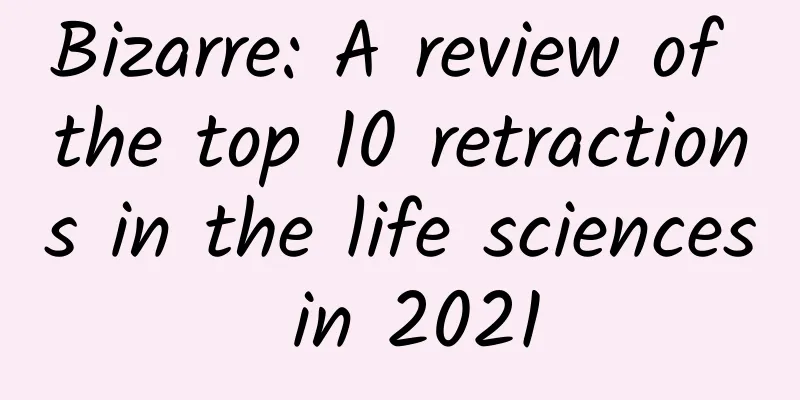What is the "Disease X" that the WHO has repeatedly warned about? | BoLan Daily

|
Your best "insider" in the scientific community is here! "Expo Daily" reports interesting scientific content of the day, the latest scientific research progress, mind-blowing scientific discoveries, and scientific observations on hot events. What is the " Disease X " that the World Health Organization has warned about many times ? The unknown pathogen "Disease X" has been mentioned many times recently. According to the WHO official website, the inclusion of "Disease X" is to cover unknown pathogens that may cause serious international epidemics. In fact, "Disease X" is not a specific disease that actually exists at present. According to the WHO, "Disease X" refers to the possibility that an unknown pathogen could cause a serious international pandemic. It has the potential to be triggered at any time and from a variety of sources, and could kill millions of people. This concept is not the first time it has been proposed. As early as 2018, the World Health Organization issued a similar warning, listing "Disease X" as a "priority pathogen" that may cause an epidemic or pandemic. Other viruses listed with it include Ebola virus, Zika virus, and severe acute respiratory syndrome (SARS) virus. Wang Hesheng, director of China's National Center for Disease Control and Prevention, said on the 9th: "Disease X" does not represent a specific disease. It is an infectious disease caused by unknown pathogens that may cause a global pandemic. There is great uncertainty in its occurrence and development. Image source: pixabay You may not believe it, but blueberries are not blue. Blueberries are often called one of the "top ten fruits" and are also on the list of "super fruits" circulating on the Internet. But when you wipe off the wax on the surface, it looks dark red! Why are blueberries called blueberries if they are red? Physicists at the University of Bristol in the UK speculate that this may be related to the special molecular structure of this wax. The researchers used a scanning electron microscope to observe the wax of the skin of fruits such as blueberries, plums and Oregon grapes, and found that the wax of these fruits has similar non-spherical microstructures. These structures can scatter blue and ultraviolet light, giving the fruit a blue-purple appearance. Even more amazing is that even if these waxes are dissolved and then recrystallized, they can still spontaneously form the same non-spherical structure and maintain the property of scattering blue and violet light. This shows that these wax molecules are not grown randomly, but the plants have carefully designed the outer coat they put on themselves. There must be a reason for this! Many fruit-eating birds have special blue and ultraviolet vision, which can identify blue fruits very clearly, and blueberries rely on these birds to spread their seeds. But stable blue pigments are scarce in nature, so we have to use some physical means. Animals such as butterflies and peacocks have also mastered this skill, which allows them to look blue without having to produce unstable blue pigments. Image source: pixabay Dino: First of all, I didn't mess with any of you! The knowledge that "an asteroid impact on the earth caused the extinction of dinosaurs" needs to be updated! The latest new discovery is that there is more than one "murderer" who caused the extinction of dinosaurs, and it may be a "gang crime." The process of the Cretaceous mass extinction, as reconstructed by Chinese scientists based on mercury data, was that first, the violent volcanic activity on the Deccan Plateau in India triggered a global decline in biodiversity, and then the asteroid impact brought a fatal blow... Mercury (Hg), commonly known as quicksilver, is the only metal that exists in liquid form at normal temperature and pressure. Volcanic activity is an important natural source of mercury in geological history, and mercury isotopes can provide effective information for tracing mercury sources, so it is often used by scientists to track large volcanic eruptions in geological history. A research team led by Li Sha, an associate researcher at the Nanjing Institute of Geology and Paleontology, Chinese Academy of Sciences, in collaboration with Professor Wan Xiaoqiao of China University of Geosciences (Beijing), conducted a follow-up study on mercury, and made a comprehensive comparison of mercury records in marine (a general term for sedimentary facies formed in marine environments) and terrestrial (a general term for sedimentary facies formed in terrestrial environments) strata near the Cretaceous/Paleogene (K/Pg) boundary. The researchers integrated data from 26 key profiles and drill holes around the world and found that the mercury values before or at the K/Pg boundary caused by the Deccan basalt eruption had similar trends to the mercury data at the boundaries of other mass extinction events in the Phanerozoic. Mercury research shows that the Deccan basalt eruption about 66.3 million to 66.15 million years ago led to the release of a large amount of carbon dioxide and other greenhouse gases, and marine planktonic foraminifera species suffered partial extinction, dwarfism, and the prevalence of catastrophic species. The Deccan basalt eruption about 66.1-66 million years ago was even more horrific. The massive eruption not only caused huge climate fluctuations, but also caused large-scale ocean acidification. The biological world began to collapse in a chain reaction, and various species began to shrink and die out. In this context, the impact of the asteroid was like the last straw that broke the camel's back, bringing a fatal blow to the Cretaceous creatures. At the moment of the impact, the high temperature and shock wave may have instantly wiped out a large number of lives near the impact area, and even microorganisms could not survive. Image credit: National Science Foundation, Zina Deretsky Dragon raises its head! Astronauts have a trick for "space haircut" With the advancement of science and technology, we can now take care of our own "head" matters whether on the ground or in the sky. Starting from the Shenzhou XII mission, our astronaut crew has had its first experience in the "space hair salon", and crew members on subsequent missions will also be able to have regular haircuts on the Chinese space station. In space, without the restraint of the earth's gravity, the hair will fly everywhere during the haircut process. Therefore, astronauts need to use a magical haircut tool to solve the problem of haircutting in a weightless environment. This magical haircut tool is a vacuum hair clipper, which is a "magic tool" that combines haircutting and vacuuming functions. When the astronauts are operating, the shaved hair debris can be quickly sucked into the built-in collector to prevent them from becoming "wanderers" in space. In this way, astronauts can not only maintain a fresh hairstyle in space, but also ensure a clean environment in the space station. In addition to the magical functions of the hair clipper, the haircutting skills of "Space Tony" are also worth mentioning. Although the haircutting environment in space is special, they have all undergone rigorous training on the ground and mastered this essential skill for space life. Astronauts sometimes cooperate with each other, one person cutting hair while the other helps collect the stray hair. When cutting hair, they will operate the clippers carefully to ensure that they do not hurt themselves or others, complete the task quickly, and present a refreshed personal image to the public. For astronauts, the experience of getting a haircut in space is both technologically advanced and interesting. It also enhances the relationship between the crew members and demonstrates the power of aerospace technology! In the new year, let us look forward to more exciting moments of astronauts in space exploration! It turns out that "the sun shining on the incense burner produces purple smoke" is true! Recently, many netizens captured a wonderful scene: the sunlight shines on the smoke of incense, and a dreamy purple color appears. This scene seems to be a vivid embodiment of the poem "The sun shines on the incense burner and produces purple smoke" by the "poet immortal" Li Bai more than a thousand years ago. In fact, behind this is the light propagation principle called Rayleigh scattering. Rayleigh scattering is also called molecular scattering, which means that the shorter the wavelength of light, the stronger the scattering, and vice versa. Rayleigh scattering can make the sky appear in different colors. As we all know, sunlight is a complex light mixed with seven monochromatic lights, among which red light has the longest wavelength, violet light has the shortest wavelength, and blue light is the second. In the clear and crisp autumn or after the rain, there is less dust and aerosol in the atmosphere. Under the strong Rayleigh scattering of atmospheric molecules, blue and purple light are scattered all around and even cover the sky. The human eye is more sensitive to blue and less to purple, so the sky looks blue. Back to the poem, "Xianglu" refers to the Xianglu Peak in the northwest of Lushan Mountain, which is named because of its round top, which looks like a huge incense burner. In the early morning, under the shining golden sunlight, bursts of purple clouds rise from Xianglu Peak, like smoke, which is very beautiful. The following three conclusions can be drawn from this: First, the "purple smoke" is not smoke, but a purple haze of light, exactly the same as the purple smoke of incense photographed by netizens; second, the weather was very good that day, with few clouds and fog, and few particulate media in the air, so Rayleigh scattering occurred; third, because the Xianglu Peak is towering into the clouds and the terrain is complex, airflow easily forms vortices or turbulence, and when sunlight shines into them, scattering is constantly generated, further enhancing the purple smoke effect and making it easy for people to observe. The content is compiled from China Science Popularization Expo Weibo, Science Academy, China Manned Spaceflight, Tadpole Music This article was first published on China Science Expo (kepubolan). Please indicate the source of the public account for reprinting |
<<: Black hole "foraging" live! How do stars become "spaghetti"?
>>: Research shows that every drop of alcohol is harmful to the body! Can we drink alcohol anymore?
Recommend
Internet industry giants dominate the market, so where is the future for grassroots entrepreneurs?
Introduction: Who is the real hero? Today's b...
Why do I often see small black spots in front of my eyes? Will it make me blind? These people should pay special attention to this
Expert of this article: Xu Qibin, associate chief...
"K Bao" Valieva's free skating ended dismally: Doping and competitive sports, the never-ending cat-and-mouse game
Written by reporter Wang Xueying Edited by Liu Zh...
If you don’t want to suffer from osteoporosis when you get old, I advise you to eat more of these 5 foods, especially women!
Osteoporosis is an invisible killer that can slow...
How to create creative copy for TikTok advertising on e-commerce platforms?
Recently, the favorite advertising resource of fo...
Glutinous or sweet? The "corn dispute" escalates again!
Popular Science Times reporter Wu Qiong Recently,...
Is the oral irrigator useful? Is it just a waste of money?
As the saying goes, "Toothache is not a dise...
Is there "fake milk" in supermarkets? ! This indicator is the most important when choosing the right milk!
Faced with the dazzling array of milk types on th...
TikTok advertising, TikTok advertising display format
TikTok advertising relies on big data recommendat...
Efficient debugging of iOS
Bugs are inevitable when writing code. Having som...
No. 6 DxOMark gives Nexus 6 a high score for photography
Those who are familiar with cameras have all hear...
The latest news on the 2022 Shanghai full lifting of the lockdown: When will it be lifted? Attached is the forecast of the time of unblocking in each area
Since May, the local epidemic situation in Shangha...
Love Course: e-book collection PDF Baidu network disk download
Love Course: e-book collection PDF Baidu network ...
Where is the trigger point for smart homes that are cold on the outside but hot on the inside?
Recently, the "2014 China Building Materials...
How much does Douyin merchant certification cost? How much does Douyin enterprise certification cost?
How much does Douyin merchant certification cost?...









